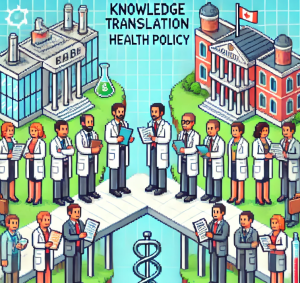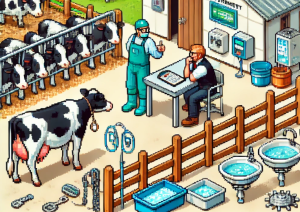
The Supreme Court Shakes Up Health Policy
During its 2024 term, the Supreme Court made decisions that changed how the branches of the federal government interact.
The decision in Loper Bright Enterprises v. Raimondo and Relentless v. Department of Commerce has grabbed much attention for effectively ending “Chevron deference,” a doctrine that influenced how courts evaluate federal regulations. This shift marks a significant change, especially for those in public health and research fields. Let’s dive into what happened and why it matters.
What Was Chevron Deference?
The Chevron doctrine came from a Supreme Court decision 40 years ago in Chevron USA v. Natural Resources Defense Council. The court created a two-step process to determine if federal regulations were valid. First, the court checked if Congress had clearly addressed the issue in question. If Congress hadn’t, the court would defer to the agency’s reasonable interpretation of the law. This made sense because agencies often have the expertise to make informed policy decisions within the broad guidelines set by Congress.
Since 1984, Chevron deference was a cornerstone of regulatory action, particularly in health policy. Agencies like the Centers for Medicare and Medicaid Services (CMS), the Centers for Disease Control and Prevention (CDC), and the Food and Drug Administration (FDA) used their expertise to interpret and apply laws. This approach allowed them to adapt to new technology, social trends, and health emergencies. Congress often wrote broad laws, trusting these agencies to fill in the details.
The End of an Era: The Supreme Court’s Decision in Loper
In Loper, the Supreme Court reviewed a regulation by the National Marine Fisheries Service (NMFS) that required fishing boat operators to pay for government-certified observers when federal funding was insufficient. The court’s decision to overturn Chevron means that courts will no longer defer to agencies’ interpretations of ambiguous laws.
Chief Justice Roberts, writing for the majority, argued that judges should interpret laws, not agencies. The court stated that agencies don’t have special competence in resolving statutory ambiguities and that courts are better suited for this task. This decision limits the power of executive agencies and shifts more authority to the judiciary.
Why This Matters for Health Policy
The Loper decision has huge implications for health and healthcare regulations. Many rules in areas like Medicare, Medicaid, the Affordable Care Act (ACA), public health, and food and drug safety are now vulnerable to legal challenges.
WTF?
Any individual or organization can challenge a regulation under the Administrative Procedure Act (APA), potentially leading to extensive litigation.
Healthcare litigators predict a wave of legal battles over these regulations. For example, protections for LGBTQ individuals under the ACA are already being contested, and more challenges are expected. This new landscape makes it harder for agencies to implement policies designed to improve public health and safety.
The Broader Impact on Federal Health Policy
The end of Chevron’s deference means that many health regulations may be overturned or delayed. Here are a few key areas where this change will be felt:
Medicare and Medicaid. Medicare, one of the most complex federal statutes, has long relied on agency interpretations to navigate its intricacies. The Supreme Court is already set to hear a case involving Medicare payments that previously relied on Chevron deference. The absence of Chevron will likely lead to more disputes over Medicare rules.
Medicare Advantage. Medicare Advantage (MA) has grown rapidly, with millions of Americans enrolled. This growth increases the importance of regulatory decisions by the Department of Health and Human Services (HHS). Without Chevron, the courts will have more say in how these regulations are interpreted, potentially leading to more legal challenges.
FDA Regulations. The FDA relies on its expertise to make critical decisions about food, drugs, and medical products. Chevron deference allowed the FDA to administer complex programs efficiently. Overturning Chevron could lead to increased litigation and uncertainty in the regulatory process.
Join the Conversation
As we navigate this new legal landscape, we want to hear from you. How do you think the end of Chevron deference will impact public health and healthcare policy? What are your concerns about the increased role of the judiciary in interpreting health regulations? Share your thoughts in the comments below or join the discussion on social media.
Conclusion
The Supreme Court’s decision to end Chevron deference marks a significant shift in federal regulatory policy. For public health practitioners and researchers, this change means that many health regulations are now open to legal challenges. The increased role of the judiciary in interpreting these regulations could lead to more uncertainty and delays in implementing health policies. As we move forward, it’s essential to stay informed and engaged in these developments, as they will have a lasting impact on public health and safety.
Be Part of the Change – Get Weekly Updates!
Stay informed and connected. Subscribe for free and share this blog to make a difference in public health with others.



